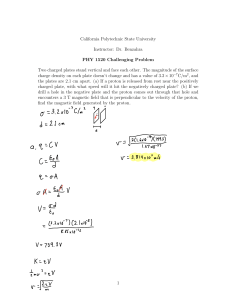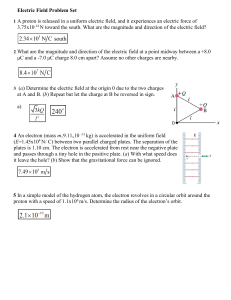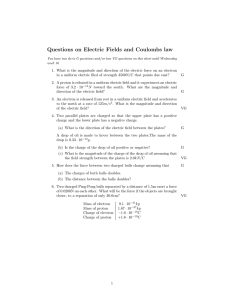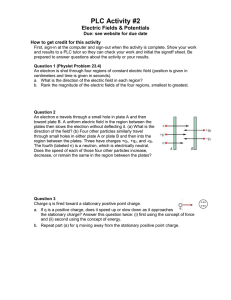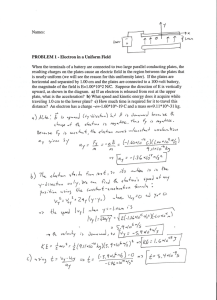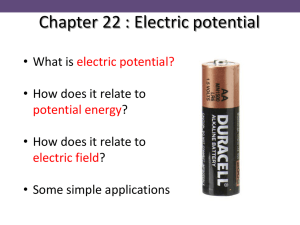Electrostatics Notes 6 – Electric Potential in Uniform Electric Fields +
advertisement
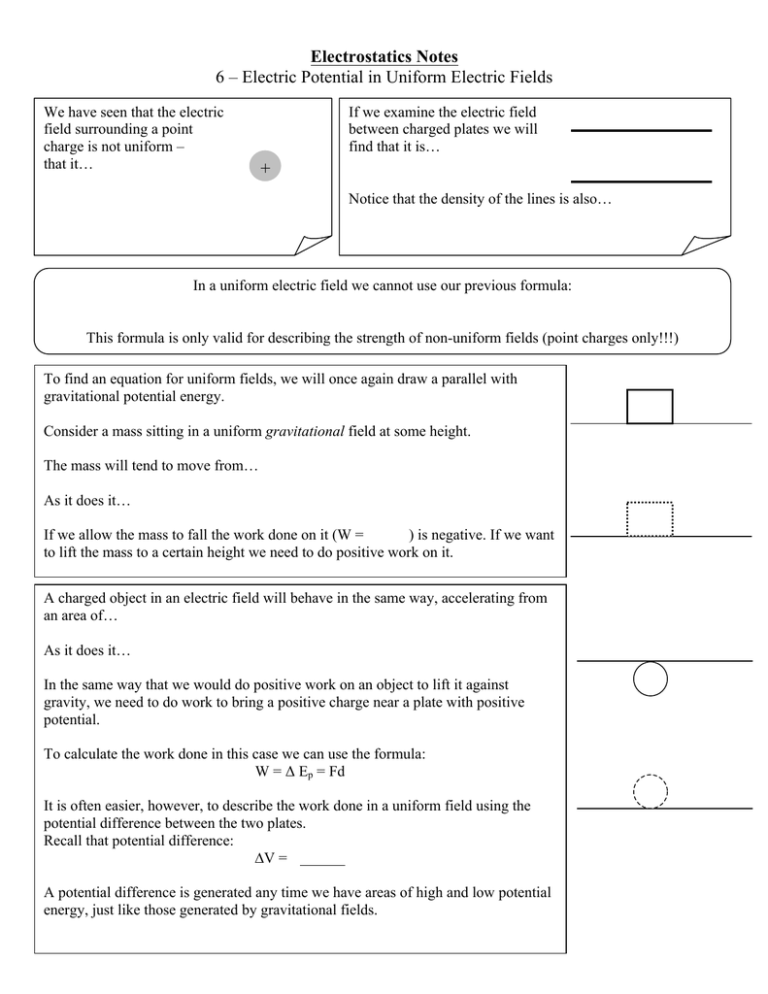
Electrostatics Notes 6 – Electric Potential in Uniform Electric Fields We have seen that the electric field surrounding a point charge is not uniform – that it… If we examine the electric field between charged plates we will find that it is… + Notice that the density of the lines is also… In a uniform electric field we cannot use our previous formula: This formula is only valid for describing the strength of non-uniform fields (point charges only!!!) To find an equation for uniform fields, we will once again draw a parallel with gravitational potential energy. Consider a mass sitting in a uniform gravitational field at some height. The mass will tend to move from… As it does it… If we allow the mass to fall the work done on it (W = ) is negative. If we want to lift the mass to a certain height we need to do positive work on it. A charged object in an electric field will behave in the same way, accelerating from an area of… As it does it… In the same way that we would do positive work on an object to lift it against gravity, we need to do work to bring a positive charge near a plate with positive potential. To calculate the work done in this case we can use the formula: W = Δ Ep = Fd It is often easier, however, to describe the work done in a uniform field using the potential difference between the two plates. Recall that potential difference: ∆V = A potential difference is generated any time we have areas of high and low potential energy, just like those generated by gravitational fields. In order to determine the electric field between two charged plates we must use the formula: Where: Example: Calculate the electric field strength between two parallel plates that are 6.00x10-2 m apart. The potential of the top plate is 6.0 V and the bottom plate is -6.0 V. E = ∆V = d = Example: An electron is accelerated from rest through a potential difference of 3.00x104 V. What is the kinetic energy gained by the electron? Example: A proton, initially at rest, is released between two parallel plates as shown. a) What is the magnitude and direction of the electric field? b) What is the magnitude of the electrostatic force acting on the proton? c) What is the velocity of the proton when it exits the - 400 V plate?
